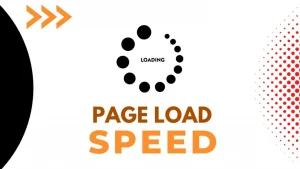Page Load Speed and User Experience in SEO
Search Engine Optimization (SEO) and User Experience (UX) are closely connected. Page Load Speed is one of the most important elements influencing SEO and UX. As internet users become increasingly impatient, the importance of quick-loading of pages cannot be overstated. Here’s a closer look at how Page Load Speed impacts User Experience and SEO performance.
The Importance of Page Load Speed
- User Expectations: Research shows that users expect a webpage to load within two seconds. If a site takes longer, visitors are more likely to abandon it, leading to higher bounce rates. This immediate drop-off can signal to search engines that the page is not providing a satisfactory experience.
- User Engagement: Fast-loading pages encourage users to stay longer, explore more content, and engage with the site. Higher engagement rates improve the likelihood of conversions and send positive signals to search engines about the content’s relevance and quality.
- Mobile Experience: With the rise of mobile browsing, optimizing page load speed has become even more crucial. The mobile version of your website is treated as the primary version by Google, which employs mobile-first indexing. Slow-loading pages can significantly impact user experience on mobile devices, leading to a drop in rankings.
SEO Implications of Slow Page Load Speed
- Ranking Factors: Google has made it clear that page speed is a ranking factor. Slow-loading sites may find it challenging to rank well in search results. In contrast, sites with faster load times often enjoy better visibility and higher click-through rates.
- Core Web Vitals: Google introduced Core Web Vitals as part of its ranking criteria, focusing on specific metrics related to user experience. Metrics like Largest Contentful Paint (LCP), First Input Delay (FID), and Cumulative Layout Shift (CLS) assess how quickly content loads and how stable it remains during loading. Poor performance on these metrics can harm a site’s SEO ranking.
- Impact on Crawl Budget: For larger websites, slow load times can affect crawl efficiency. Search engine bots have a limited crawl budget, and if they encounter slow-loading pages, they may not fully index the site. Important pages may be missed in search results as a result.
Strategies for Improving Page Loading Time
- Optimize photos: Websites with large photos may load much more slowly. Using formats like WebP and implementing lazy loading can improve load times without sacrificing quality.
- Minify Resources: Reducing the size of HTML, CSS, and JavaScript files by minifying code can enhance load speed. This procedure can be automated with tools like CSSNano or UglifyJS.
- Leverage Browser Caching: By enabling browser caching, returning visitors can load pages faster since static resources are stored locally.
- Use a Content Delivery Network (CDN): CDNs distribute your website’s content across multiple servers globally, allowing users to access data from the closest server, which can significantly reduce load times.
- Reduce Redirects: Each redirect creates additional HTTP requests and increases load times. Minimizing unnecessary redirects can enhance performance.
- Prioritize Critical Rendering Path: Load only the essential resources required for rendering the above-the-fold content first. This improves perceived load speed, making the user feel that the site is loading faster.
Conclusion
In the intersection of Page Load Speed, User Experience, and SEO, the message is clear prioritize speed for better rankings and enhanced user satisfaction. As search engines continue to evolve, focusing on user-centric strategies will not only improve your SEO efforts but also foster a more engaging and rewarding experience for your website visitors. By implementing effective optimization techniques, you can create a faster, more efficient website that appeals to both users and search engines alike.
